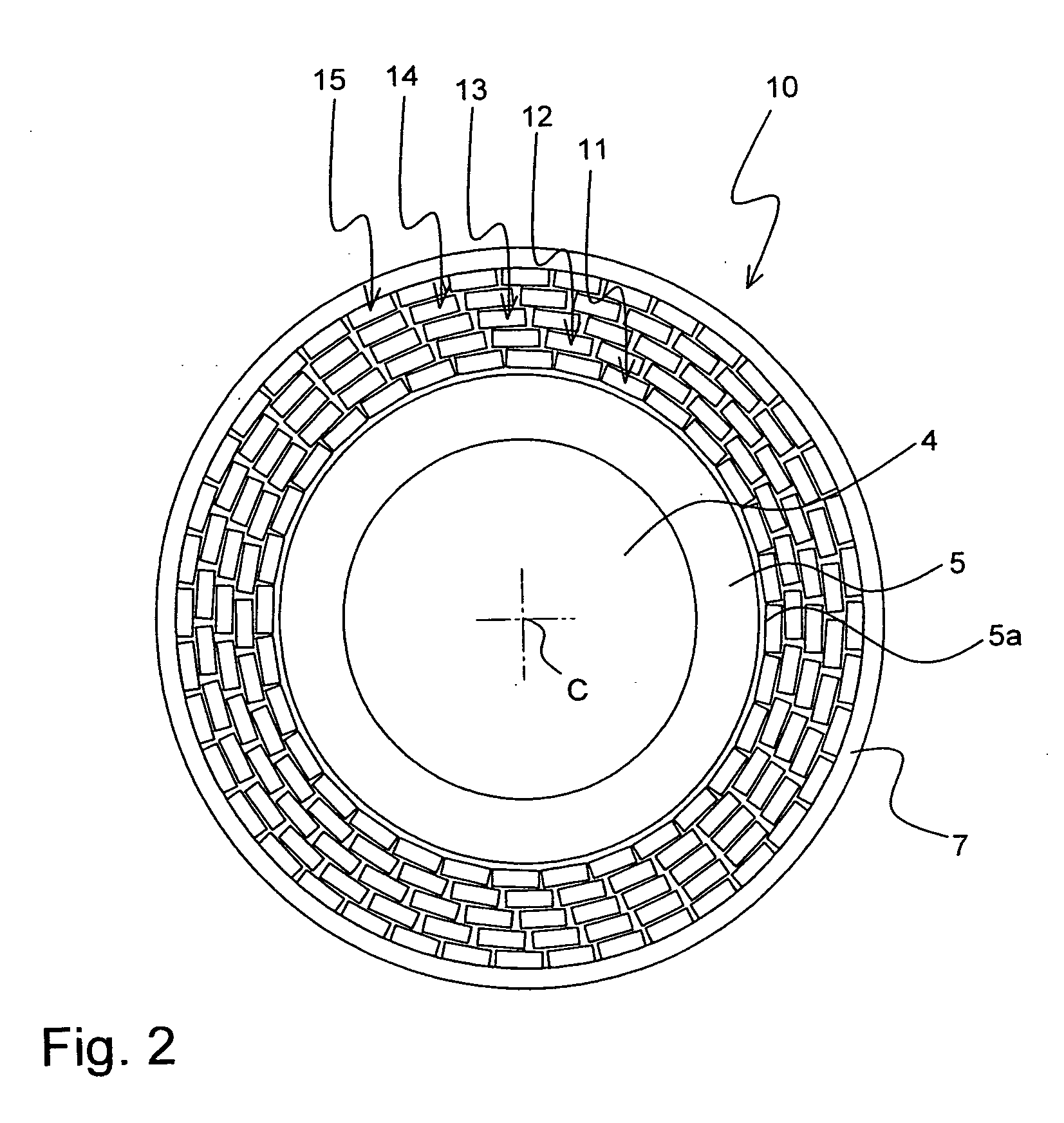Superconducting cable
a superconducting cable and cable technology, applied in the manufacture/treatment of superconducting devices, permanent superconducting devices, superconducting magnets/coils, etc., to achieve the effect of increasing the current transport capacity of the cable, good protection, and keeping losses
- Summary
- Abstract
- Description
- Claims
- Application Information
AI Technical Summary
Benefits of technology
Problems solved by technology
Method used
Image
Examples
first embodiment
[0028]FIG. 1 shows an inventive superconducting cable 1 in a schematic cross-section, perpendicular to the cable axis along which the cable structure is basically invariant (note the twist illustrated in FIG. 4, though).
[0029]The cable 1 comprises two layers 2, 3 of conductors 2a, 3a with a high Tc (critical temperature, below which the conductor has superconductive properties). Note that preferably Tc of all conductors 2a, 3a, in accordance with the invention, is above 77 K. The conductors 2a of the inner layer 2, here a number of 32 conductors 2a, are all arranged in a ring shape on the same radius r2 of the cable 1 with respect to the cable center C, with respect to which the cable 1 is basically axially symmetric. The conductors 3a of the outer layer 3 are correspondingly all on the same radius r3, with r3>r2.
[0030]The conductors 3a of the outer layer 3 are here tapes, namely coated conductors with a stainless steel substrate on which YBCO has been deposited. So YBCO acts as the...
second embodiment
[0036]FIG. 2 shows an inventive superconducting cable 10.
[0037]It comprises altogether five layers 11-15 of high Tc conductors. The two innermost layers 11 and 12 comprise conductors of BSCCO and can be considered as inner layers in accordance with the invention, whereas the three outermost layers 13, 14 and 15 comprise YBCO and can be considered as outer layers in accordance with the invention. Further, the cable 10 comprises a tubular dielectric support structure 5 and a shunt metal element 5a again, on which the layers 11-15 are supported. The cavity within the support structure 5 acts as a channel 4 for a coolant again. The outermost layer 15 is covered with a dielectric insulation 7, which comprises here thick plastic tapes (not shown in detail).
[0038]When AC current is transported through the layers 11-15, the layers farther away from the center C experience a higher current amplitude. In accordance with the invention, these outer layers 13, 14 and 15 comprise YBCO material wh...
PUM
| Property | Measurement | Unit |
|---|---|---|
| distance | aaaaa | aaaaa |
| AC frequencies | aaaaa | aaaaa |
| frequencies | aaaaa | aaaaa |
Abstract
Description
Claims
Application Information
 Login to View More
Login to View More - R&D
- Intellectual Property
- Life Sciences
- Materials
- Tech Scout
- Unparalleled Data Quality
- Higher Quality Content
- 60% Fewer Hallucinations
Browse by: Latest US Patents, China's latest patents, Technical Efficacy Thesaurus, Application Domain, Technology Topic, Popular Technical Reports.
© 2025 PatSnap. All rights reserved.Legal|Privacy policy|Modern Slavery Act Transparency Statement|Sitemap|About US| Contact US: help@patsnap.com



